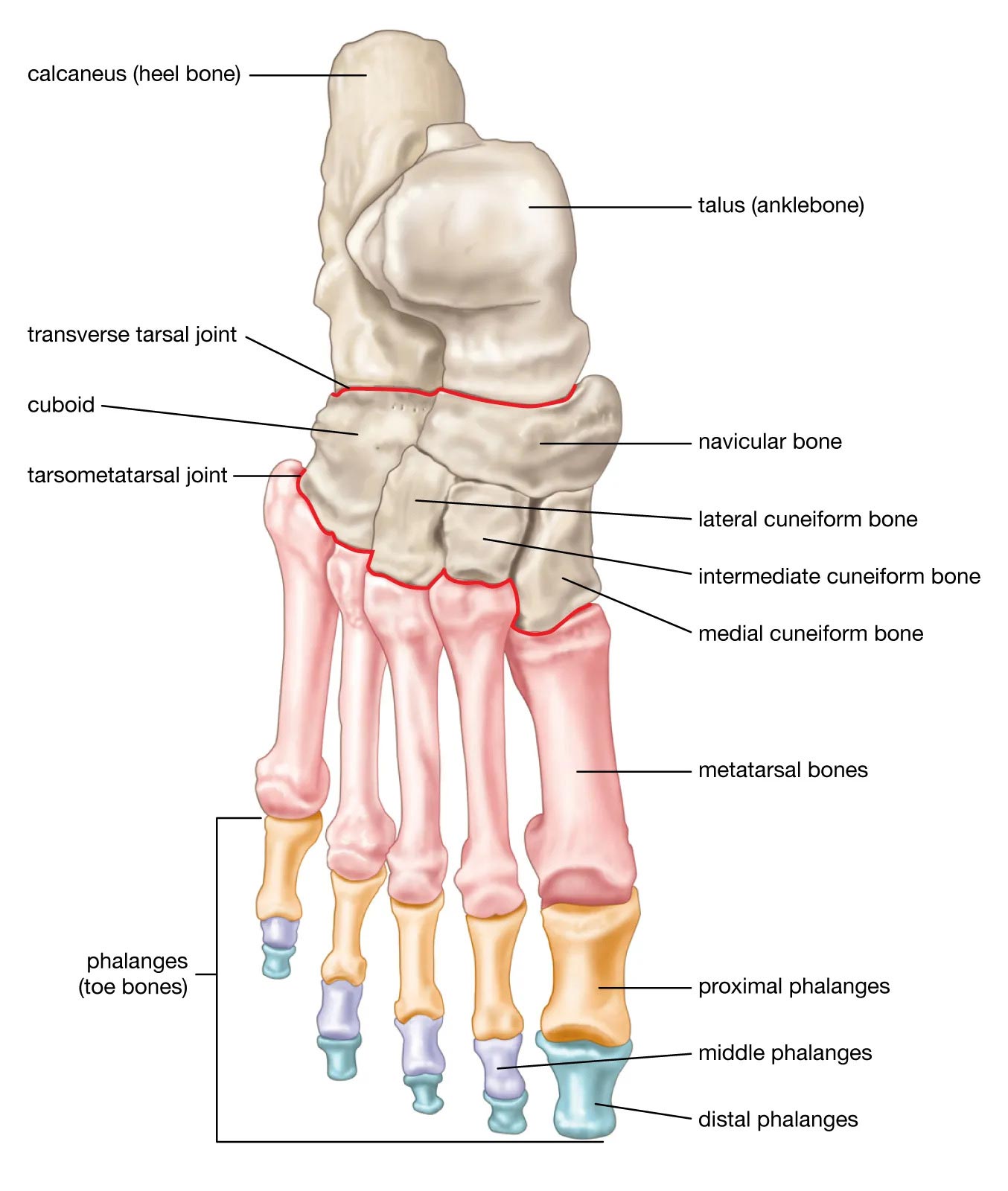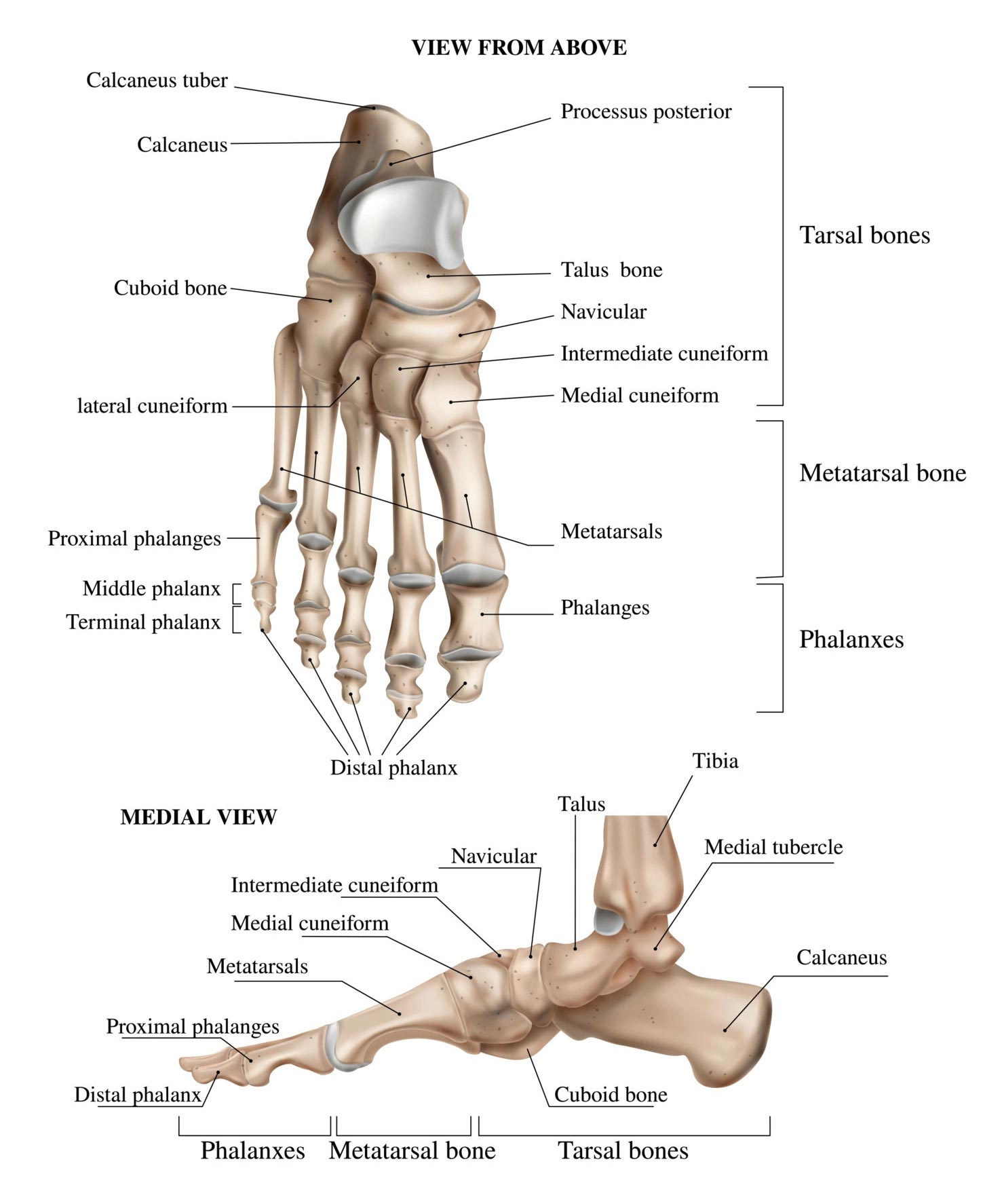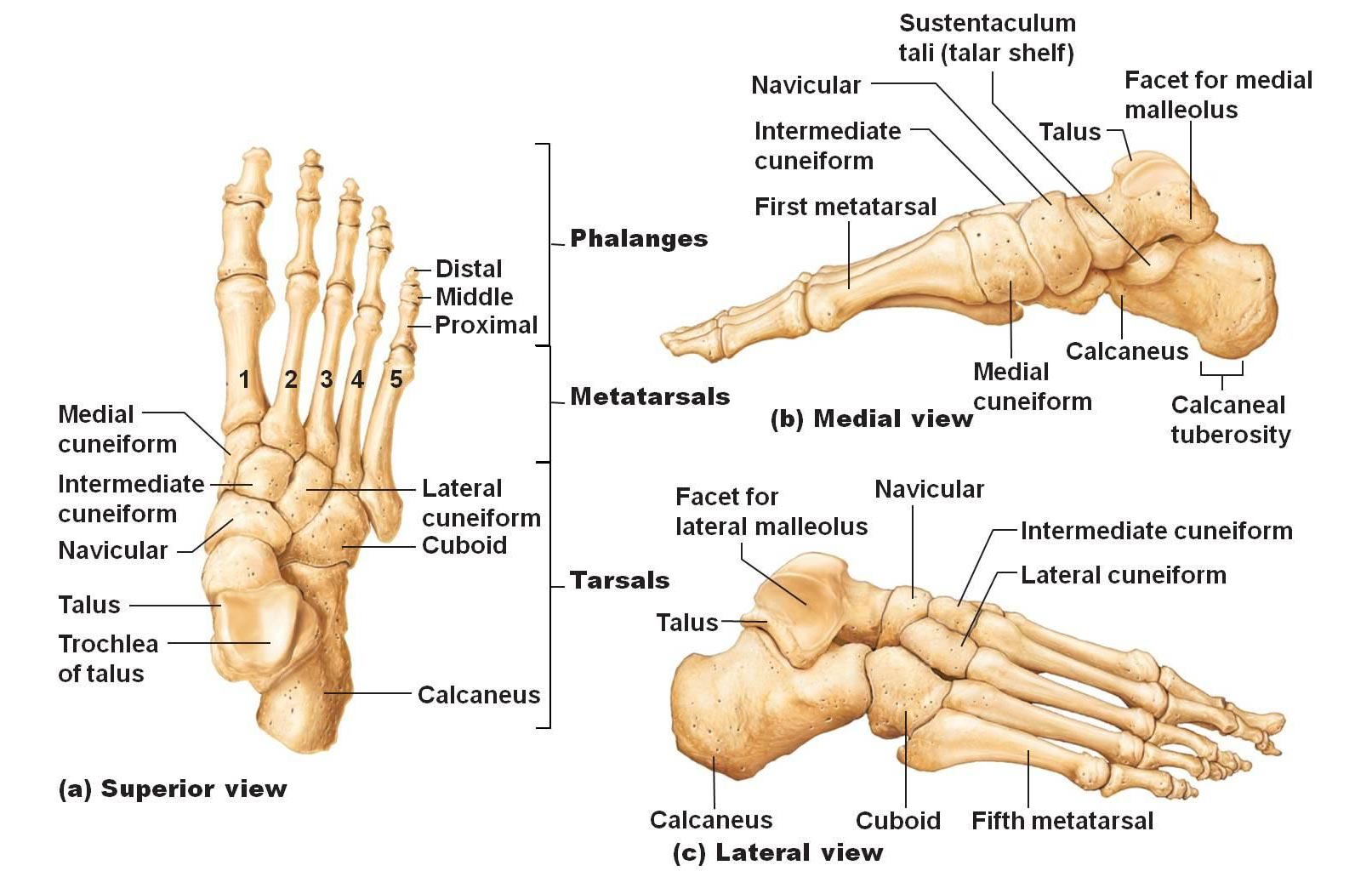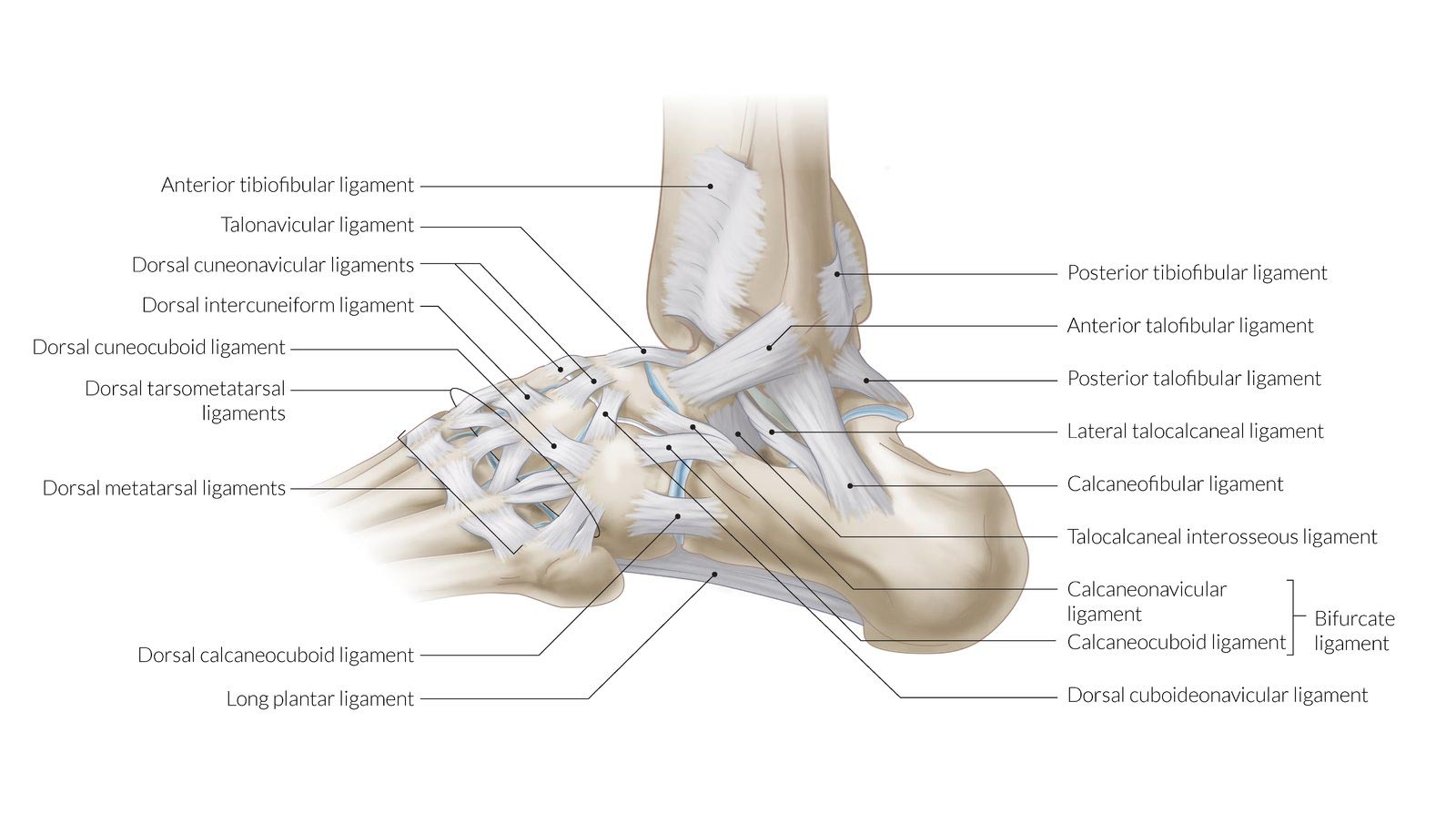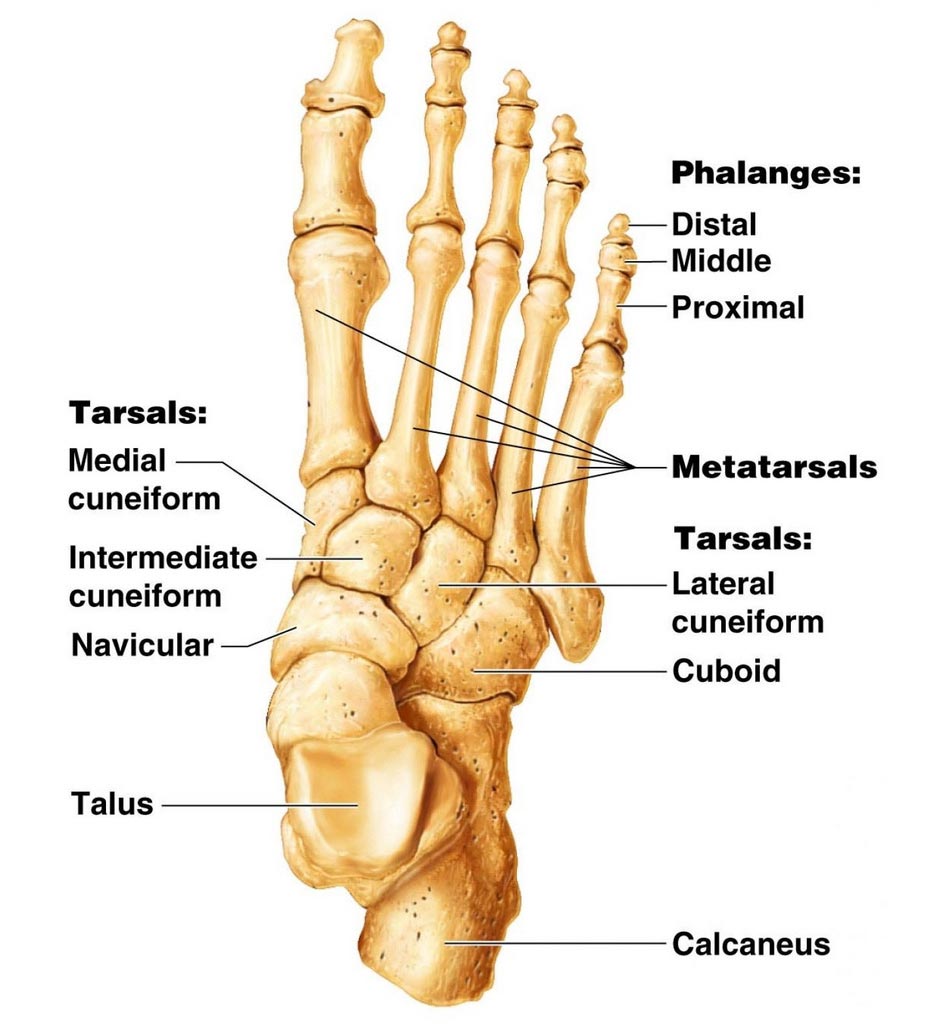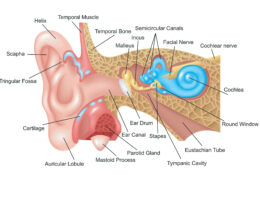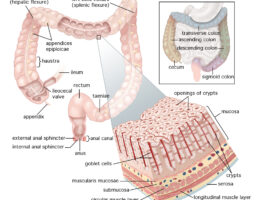The foot is composed of a complex arrangement of bones, which help to support the weight of the body, maintain balance and enable movement. Here is a brief description of the labeled parts of the foot bones:
- Calcaneus: The largest bone in the foot, located in the heel.
- Talus: A bone that sits atop the calcaneus and forms a joint with the tibia, one of the bones in the lower leg.
- Navicular: A small bone located on the medial (inner) side of the foot.
- Cuboid: A cube-shaped bone located on the lateral (outer) side of the foot.
- Cuneiforms: A group of three bones located in the midfoot, adjacent to the navicular bone.
- Metatarsals: A group of five long bones located in the forefoot, connecting the toes to the midfoot.
- Phalanges: The bones of the toes, with each toe consisting of three phalanges, except for the big toe, which has two.
The bones of the foot work together to form arches that help to distribute the weight of the body and provide stability and shock absorption. The muscles, tendons and ligaments of the foot also play a crucial role in foot function, allowing for movements such as walking, running, and jumping. Understanding the anatomy of the foot bones can be important in the diagnosis and treatment of foot conditions, such as fractures, sprains, and arthritis.
